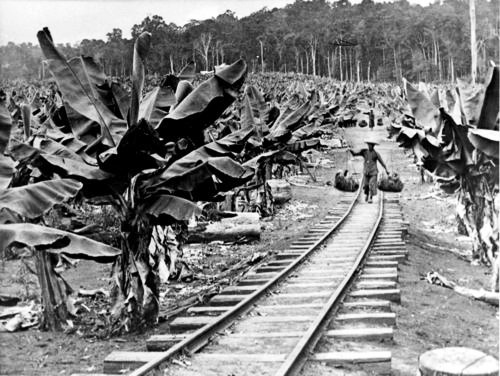- Alien introgressions represent a rich source of genes for crop improvement. Polyploids such as wheat do it best.
- Characterization of sorghum genotypes for traits related to drought tolerance. There is diversity within the “association panel” of diverse germplasm used. What I want to know is how that is different from a core or mini-core collection.
- Rice near-isogenic-lines (NILs) contrasting for grain yield under lowland drought stress. Small genetic differences can lead to big differences in yield under drought stress. What I want to know is whether doing this on NILs is better value for money than doing it on association panels of germplasm (see above), whatever they may be.
- Towards better tasting and more nutritious carrots: Carotenoid and sugar content variation in carrot genetic resources. European accessions sweeter and more orange than Asian.
- Changes in duration of developmental phases of durum wheat caused by breeding in Spain and Italy during the 20th century and its impact on yield. Fascinating unpicking of just where the genetic changes have their impact.
- Legume genetic resources: management, diversity assessment, and utilization in crop improvement. A lot of characterization, not enough evaluation. Core collections useful, but not useful enough. Crop wild relatives being used, but not enough. Good plug for the importance of geo-referencing.
- Genetic diversity and geographical peculiarity of Tibetan wild soybean (Glycine soja). Low and high, respectively.
- Analysis of agricultural production instability in the Gezira Scheme. Went up for wheat, cotton and sorghum, down for groundnuts, on liberalization.
- Biochar effects on soil biota – A review. It’s complicated but, on the whole, not unpositive.
- A research agenda to explore the role of conservation agriculture in African smallholder farming systems. Basically, it is likely to work least well in marginal conditions. Which is kinda surprising, and not, at the same time.
- Ecotypes of European grass species respond differently to warming and extreme drought. Yeah, but, alas, not in the way one might have wished.
- Comparison of nutritional quality of the crops grown in an organic and conventional fertilized soil. Maybe lower nitrate and N, higher P in organic crops. But really too much variation to be sure.
Nibbles, Menu edition: Garlic, Potatoes, Meat, Tomatoes, Ramps, Bananas, Chocolate, Coffee, Pepper breeding, Local cattle in RSA
- Chicago, Chicago, it’s an edible town. Major urban centre named for edible wild species shock.
- Drought-resistant potatoes! At least 1000 genes involved.
- Test-tube burgers? ((Not normally the kind of thing I’d link to, but you can see what’s happening here.))
- Wild tomatoes and climate change. A meeting round-up from our chums at CIAT.
- The appeal of fair trade bananas. A good read.
- Technical Guidelines on the Safe Movement of Cacao Germplasm updated.
- Coffee, please. A cup of your finest specialty variety.
- Caribbean pepper breeders getting hot under the collar.
- Gotta love the way Farm Radio Weekly not only has great stories about agrobiodiversity, but also handy background notes.
Well, that was fun.
Plant micro-reserves on Mediterranean islands
 A while back we blogged a couple of times about plant micro-reserves in Crete, including one for an endemic crop wild relative. That work is linked to a similar project in Cyprus, and although no CWRs are on its priority list of species, I suspect some of the target habitats may contain some. I mention all this because the Cyprus project happens to have a Facebook page (which is interesting in itself), on which photographs have just been published of the setting up of notice boards at one of the micro-sites. ((The photo of Cape Grecko on Cyprus is reproduced from TeryKats’s Flickr page under a Creative Commons license.))
A while back we blogged a couple of times about plant micro-reserves in Crete, including one for an endemic crop wild relative. That work is linked to a similar project in Cyprus, and although no CWRs are on its priority list of species, I suspect some of the target habitats may contain some. I mention all this because the Cyprus project happens to have a Facebook page (which is interesting in itself), on which photographs have just been published of the setting up of notice boards at one of the micro-sites. ((The photo of Cape Grecko on Cyprus is reproduced from TeryKats’s Flickr page under a Creative Commons license.))
Bananas on TV and the blogosphere
In Africa, political parties must stop using real banana leaves as their symbol at rallies or on buses…
Why? Pat Heslop-Harrison explains the reason, and much more, in a great new post at AoB Blog. The occasion is the 13 May edition of the BBC TV programme The One Show, which included an interview with Dr Heslop-Harrison by journalist, food critic and TV personality Jay Rayner. With links to a couple of freely available Annals of Botany papers and a presentation too.
LATER: Let’s not forget the importance of banana for brewing beer in parts of Africa.
Brainfood: Australian obesity, Pigeonpea blight, Chocolate spot, Agroforestry, Andean potato agriculture, Salinity tolerance, Tree migration, Tea
- The Australian paradox: A substantial decline in sugars intake over the same timeframe that overweight and obesity have increased. Wait … there’s an Australian paradox too?
- Phytophthora blight of Pigeonpea [Cajanus cajan (L.) Millsp.]: An updating review of biology, pathogenicity and disease management. The wild relatives are sources of resistance, but that won’t be enough.
- Effects of crop mixtures on chocolate spot development on faba bean grown in mediterranean climates. Intercropping with cereals reduces the disease.
- Combining high biodiversity with high yields in tropical agroforests. It can be done, for smallholder cacao in Indonesia.
- And elsewhere … Cost benefit and livelihood impacts of agroforestry in Bangladesh. An entire book.
- Resource concentration dilutes a key pest in indigenous potato agriculture. Monocropping can be sustainable. Via.
- Community versus single-species distribution models for British plants. Overall, better stick with the single species kind, but it was worth a try.
- Quantitative trait loci for salinity tolerance in barley (Hordeum vulgare L.). They exist, and there are markers.
- Climate, competition and connectivity affect future migration and ranges of European trees. Well, doh.
- Quantifying carbon storage for tea plantations in China. All the tea in China…sequesters a lot of C. But plant type doesn’t count for much.
